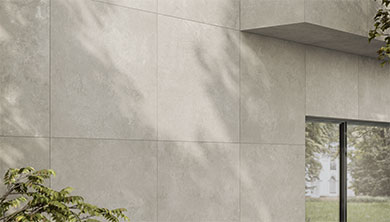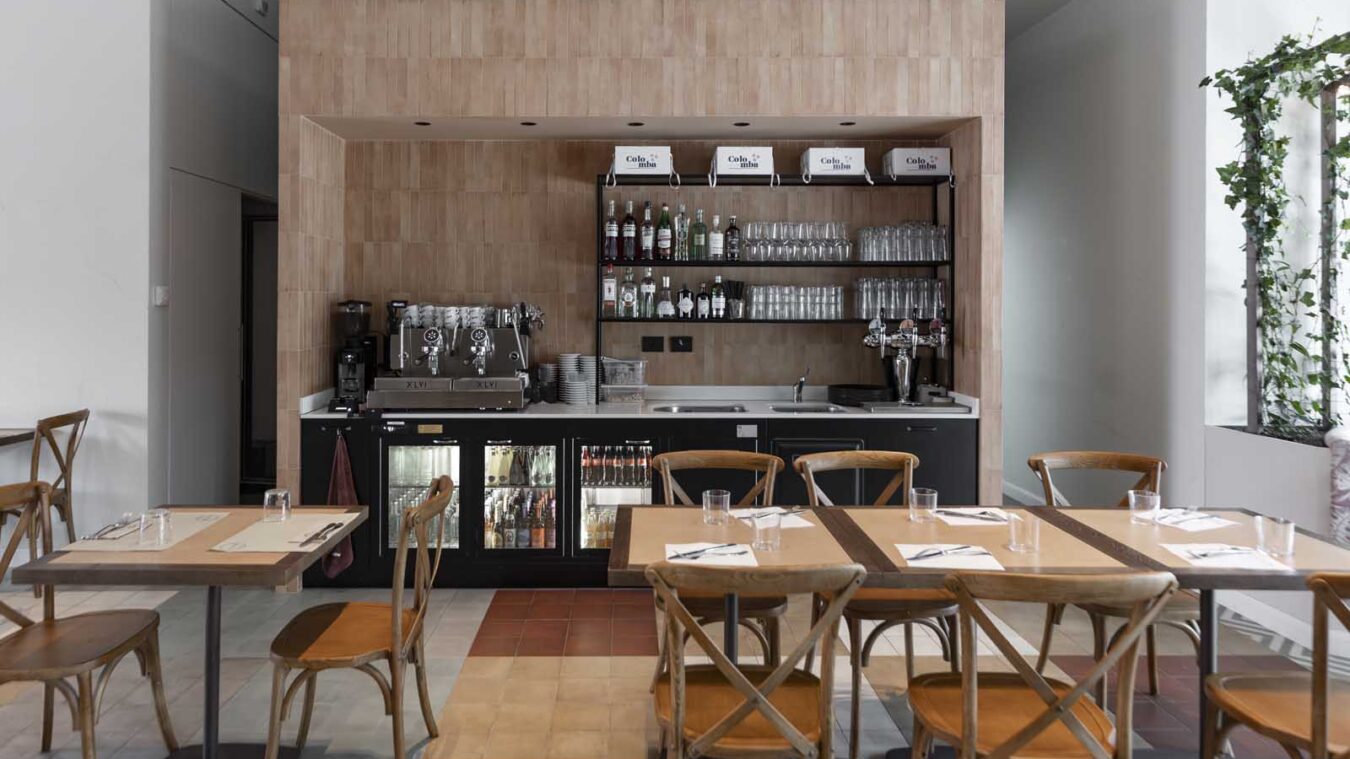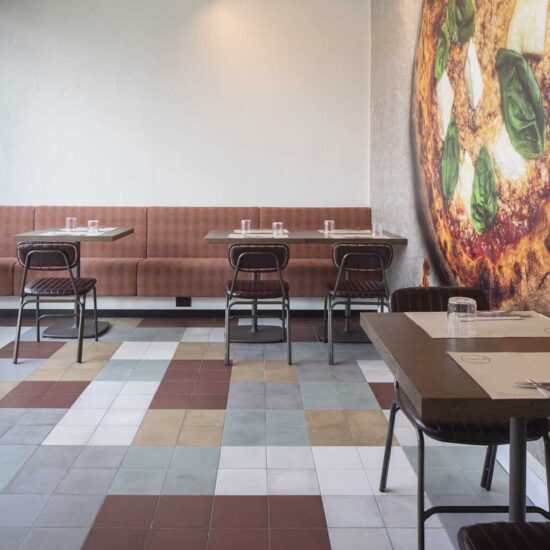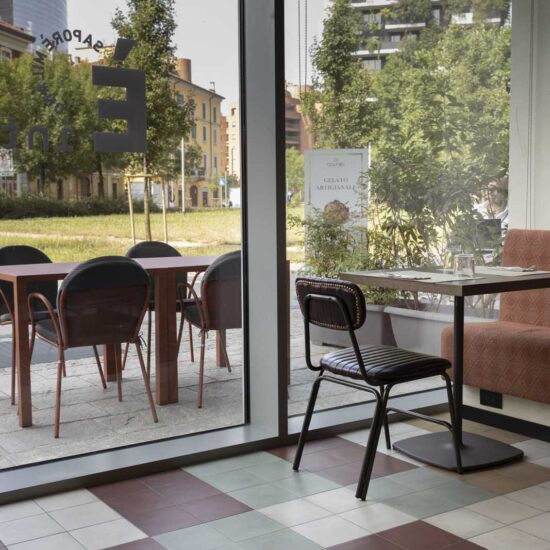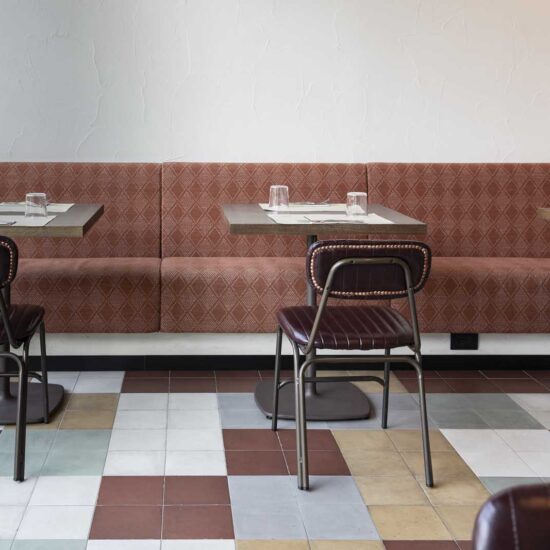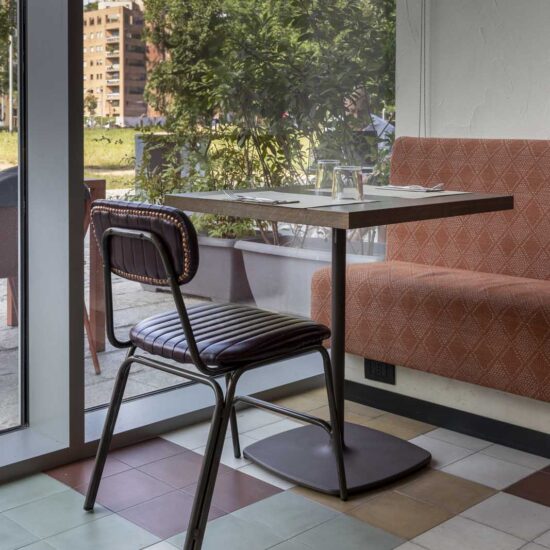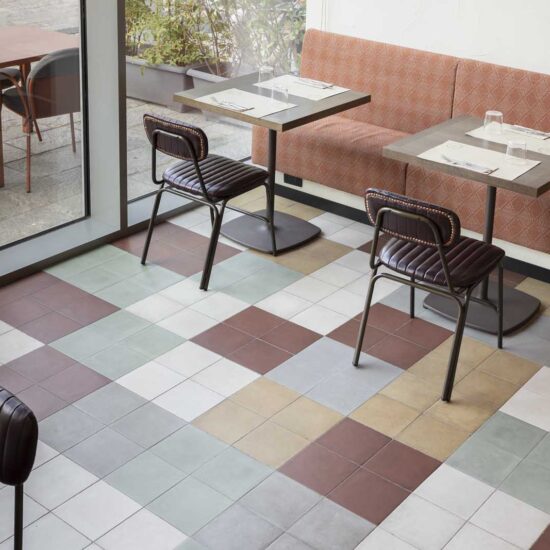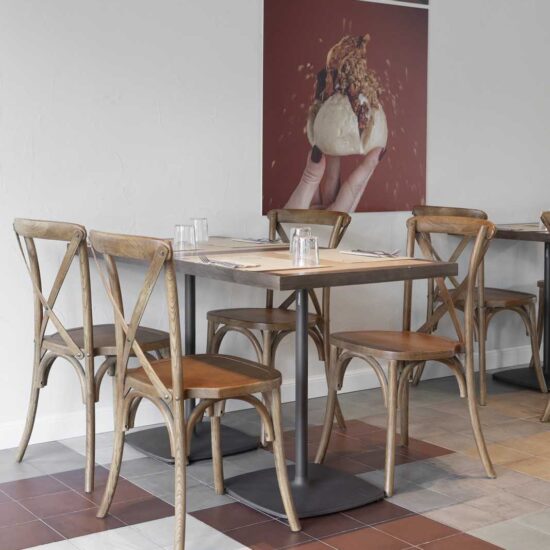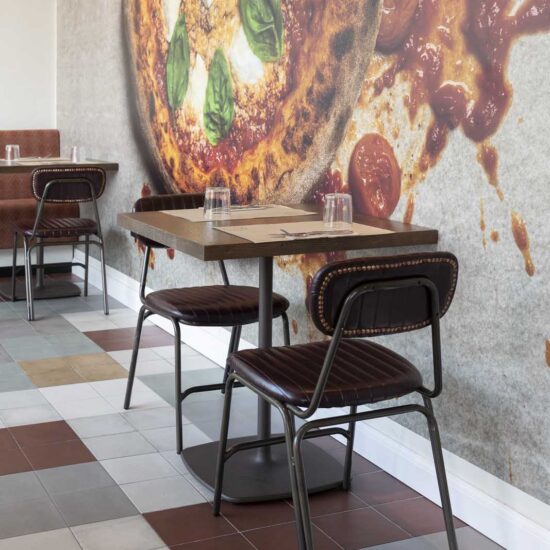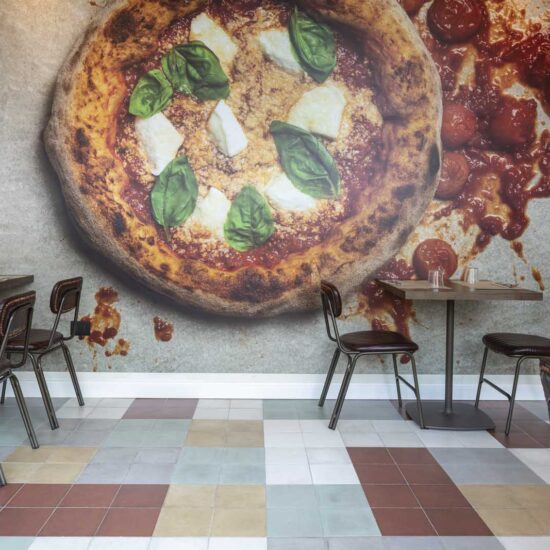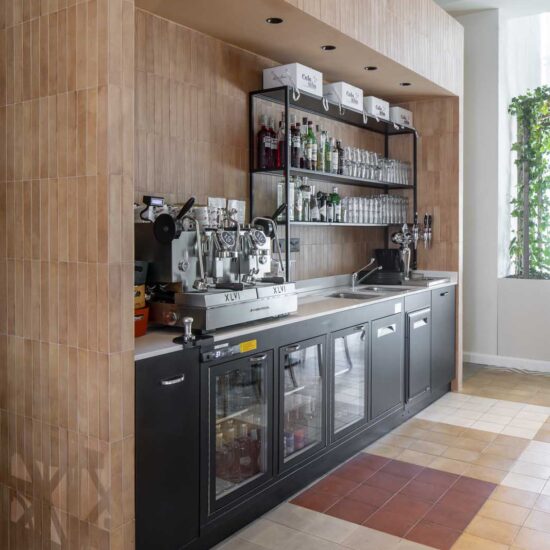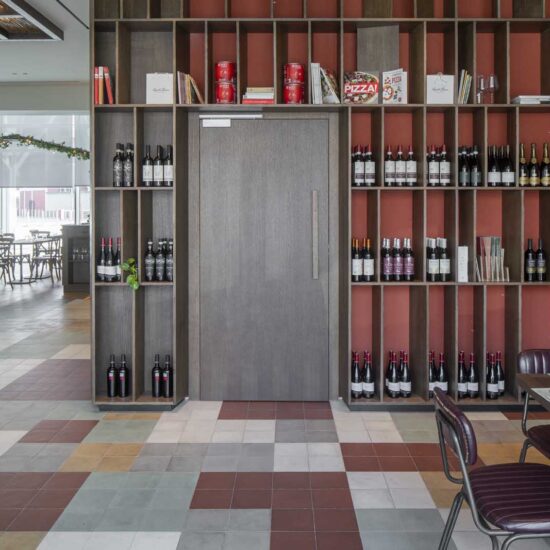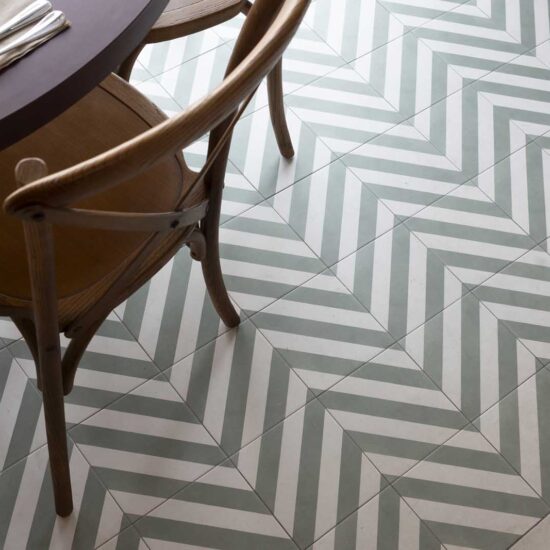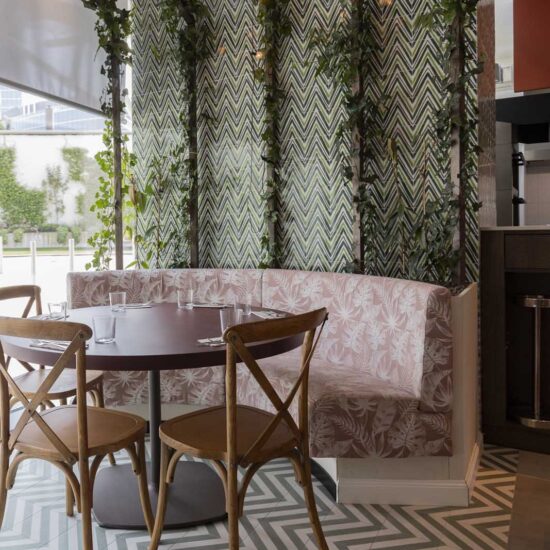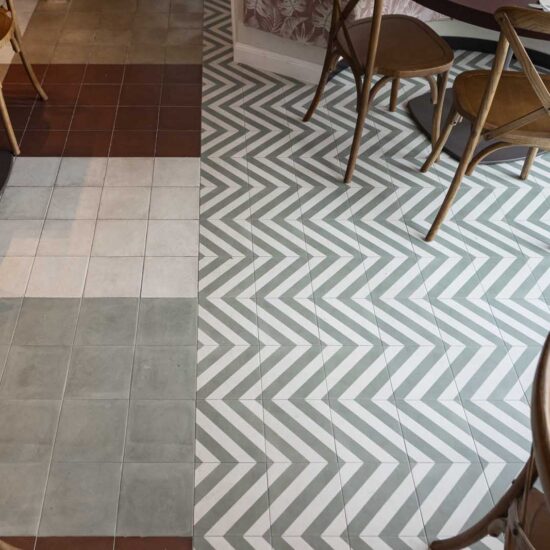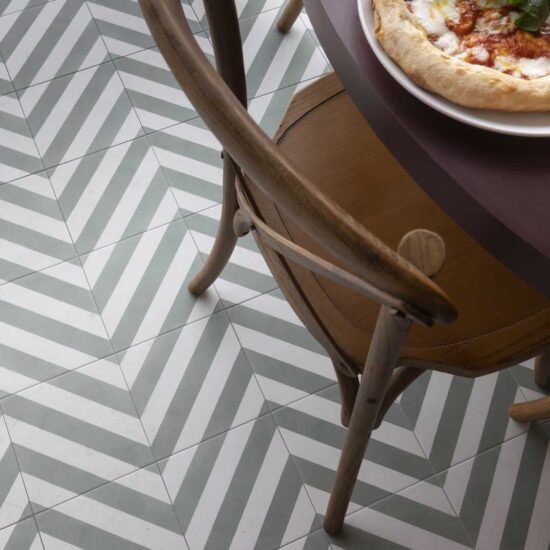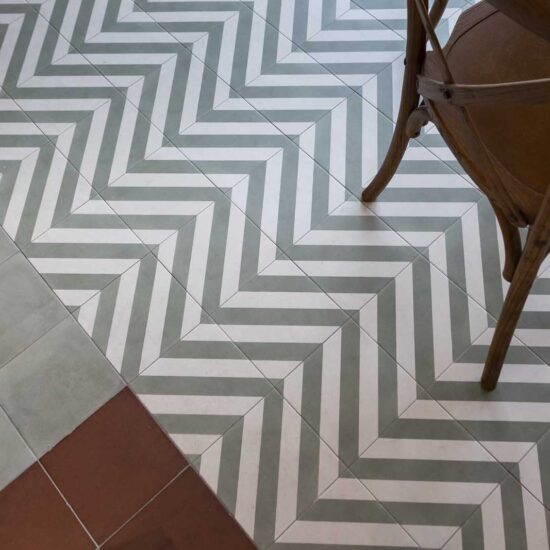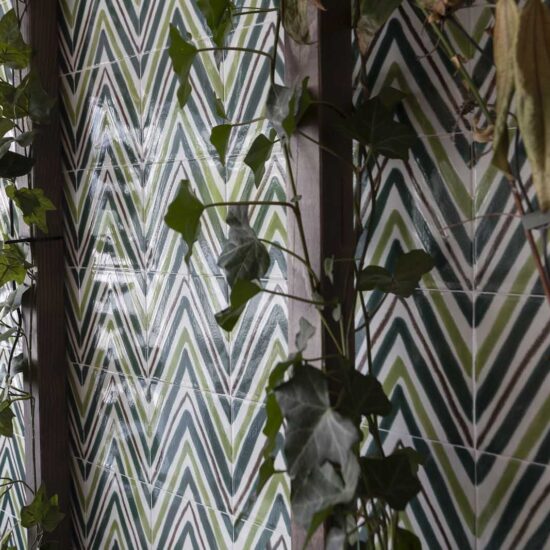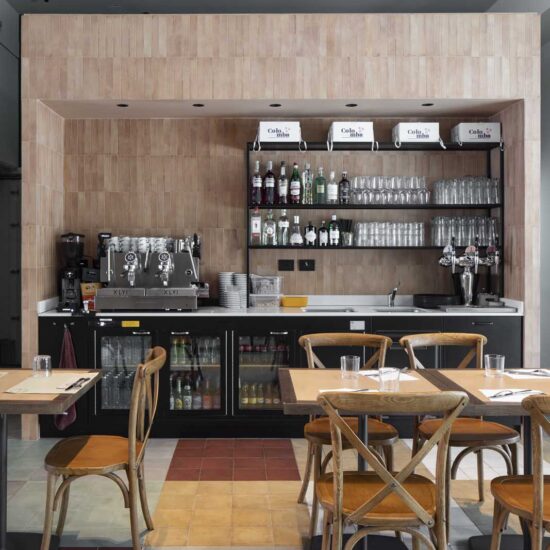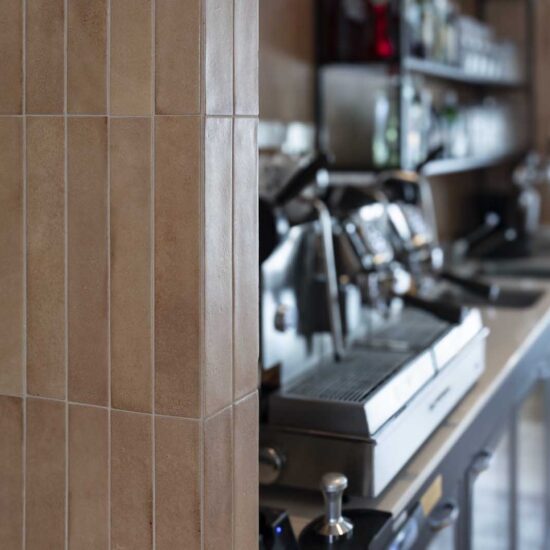In the heart of Milan, the new Saporè venue interprets contemporary dining through an architectural project that blends functionality, visual identity, and color research. Designed by Studio MGAlab and Architect Giovanni Musica, the project stands out for the expressive use of Ragno ceramic collections, which play a leading role in defining the space.
The concept develops along two main lines: on one hand, a fluid and readable layout, designed to optimize pathways and the user experience; on the other, a strong visual identity, built through a system of ceramic coverings that becomes both narrative and a distinctive hallmark.
Ceramics as a visual language
The colored tiles by Ragno are the heart of the project: not just a covering, but a visual pattern that marks the space. The floor is conceived as a modular pattern with color variations, inspired by pizza ingredients: green like basil, red like tomato, white like mozzarella, brown like grilled vegetables.
This color palette interacts with natural materials and essential furnishings: wood, bamboo, raw lime. The lighting, both natural and artificial, is calibrated to enhance the ceramic textures and emphasize the volumetric rhythm of the spaces.
The Ragno collections as an identifying element of the project
The Contrasti collection in the 20×20 mm size was used to create a modular ceramic carpet on the floor, where the Celadon, White, Grey tones and the decorative Tappeto 10 alternate in a rhythmic play of colors and textures.
On the walls, the Amuri collection in the 5.3×30 mm size, in the Cotto shade, introduces a warm, artisanal note that interacts with the wood furnishings and bamboo ceilings, helping to create a welcoming and authentic atmosphere.
To further enrich the floor’s color composition, elements from the Ottocento collection (20×20 mm) were added, in the Cadmium, Ochre, Talk, and Pumice variants. These matte and powdery surfaces evoke Italian ceramic tradition, reinterpreted in a contemporary way.
Finally, the decorative Tappeto 2 from the Sol collection (15×15 mm) was used as a graphic detail to highlight certain functional areas and give rhythm to the spatial composition.
A project that transforms the space into an experience, where every detail tells the story, culture, and aesthetic of contemporary Italian cuisine.
Ph Vanni Borghi






